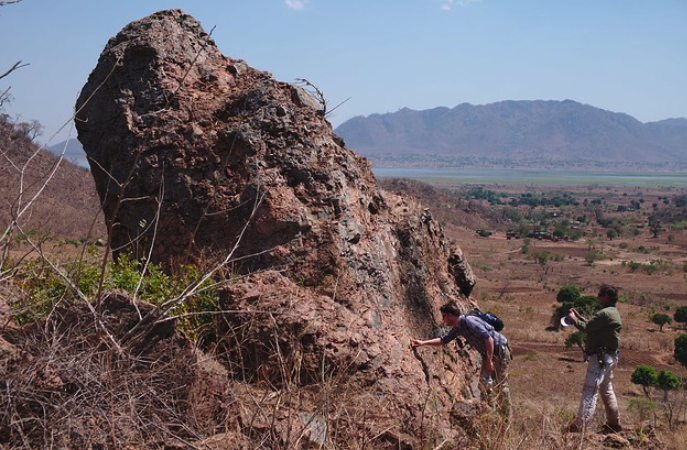
Lead supervisor: Helen Williams, Earth Sciences
Co-supervisor: Justin Hu, Earth Sciences; Charlie Beard, Earth Sciences; Sam Broom-Fendley, University of Exeter; Marie Edmonds, Earth Sciences; Kathryn Goodenough, British Geological Survey
Brief summary:
Can we use new isotope tracers to understand how the critical rare earth element (REE) deposits associated with alkaline and carbonatitic magmas form?
Importance of the area of research concerned:
The global push to decarbonize energy production and transport has generated unprecedented demand for critical metals used in technologies such as wind turbines and electric vehicles. The rare earth elements (REEs) are particularly critical due to their importance in these technologies and their restricted supply. The discovery of new REE deposits that can be mined in an environmentally and socially responsible way is thus vital to the energy transition. Most REE deposits are associated with alkaline-silicate rocks and carbonatites formed in extensional intracontinental settings (such as the East African Rift Zone), but the exact processes responsible for the concentration of REE in these settings remain poorly understood. This project will develop novel stable isotope compositions as tracers of REE enrichment and mobility in magmatic melts, fluids and brines and will use these tracers to develop a global process-based understanding of REE enrichment that can guide REE exploration and area selection at range of different scales.
Project summary :
The formation of REE deposits associated with alkaline to peralkaline igneous rocks and carbonatites is controlled by the composition of the mantle source region, melting and magmatic differentiation processes and the interaction between melt, magmatic fluids, groundwaters and country rock. Quantifying the relative influence of the processes responsible for REE mobilisation and enrichment in these settings is challenging using currently available geochemical tools. This project will develop novel REE and transition metal stable isotope tracers to better constrain REE behaviour during magmatic and hydrothermal processes. These tracers will be tested at well-characterised REE deposits where the student will analyse rock and mineral samples for their isotope compositions and develop quantitative models for REE transport and enrichment.
What will the student do?:
New advances in mass spectrometry allow the stable isotope composition of many ‘heavy’ (high amu) elements to be measured at high precision. Stable isotope systems based on the REE are extremely novel and relatively unexplored but offer exciting potential as tracers of REE partitioning and enrichment in magmatic and hydrothermal settings. With full support and training from supervisors, the student will develop analytical protocols for high-precision REE stable isotope analysis and will use these systems, in combination with other geochemical tools, to answer fundamental questions about how REE become mobilised and concentrated in the crust during the generation and emplacement of silicate alkaline and carbonatite magmas. The student will initially study well-characterised rock and mineral samples from the East African Rift and associated REE deposits. Depending on results and the student’s interest the project could also be expanded to consider other tectonic settings and other classes of REE deposits. These results will improve our understanding of REE enrichment processes and inform the development of exploration vectors for viable REE deposits.
References - references should provide further reading about the project:
Broom-Fendley S, Brady AE, Wall F, Gunn G, Dawes W. REE minerals at the Songwe Hill carbonatite, Malawi: HREE-enrichment in late-stage apatite. Ore Geology Reviews. 2017 Mar 1;81:23-41.
Horton F, Nielsen S, Shu Y, Gagnon A, Blusztajn J. Thallium isotopes reveal brine activity during carbonatite magmatism. Geochemistry, Geophysics, Geosystems. 2021 Mar;22(3):e2020GC009472.
Yaxley GM, Kjarsgaard BA, Jaques AL. Evolution of Carbonatite Magmas in the Upper Mantle and Crust. Elements: An International Magazine of Mineralogy, Geochemistry, and Petrology. 2021 Oct 1;17(5):315-20.
Applying
You can find out about applying for this project on the Department of Earth Sciences page.